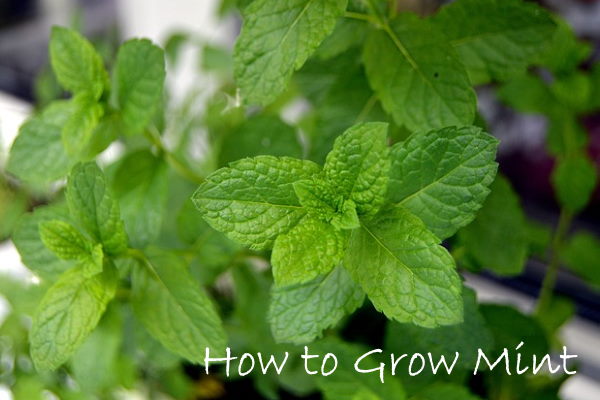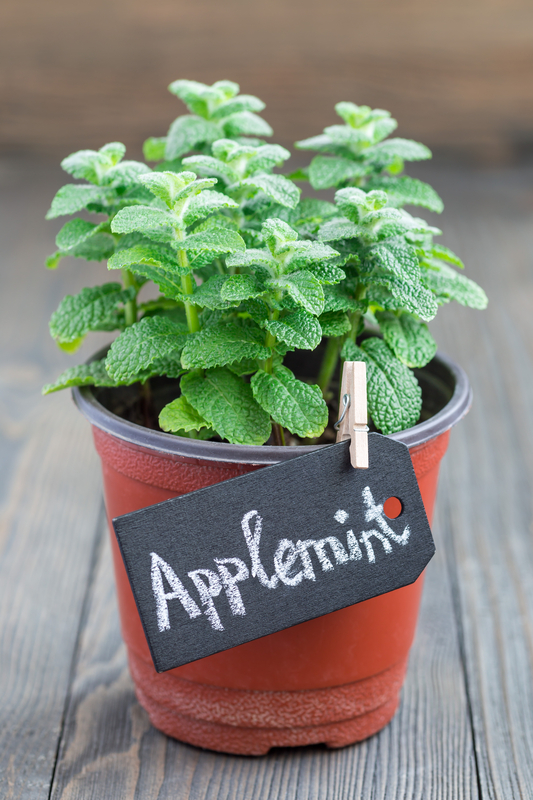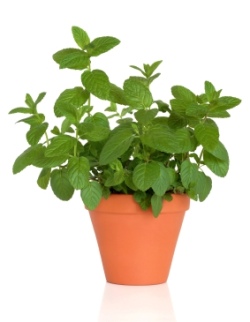How to Grow Mint Plant Indoors
Botanical Name: Mentha species
Mint plant comes in an amazing number of flavors. From more than 600 members of the mint family -- and many more hybrids -- among the most common are peppermint, spearmint, apple mint and pineapple mint.
Its many uses makes mint a popular herb to grow year-round. Discover how to grow mint on your windowsill or under fluorescent lights indoors.

Get to Know Your Mint Plant
Mint herb is a hardy perennial. Its oval, green leaves have a deeply veined texture, with finely toothed edges. Some varieties have leaves tinged with red or purple or are variegated.
When grown outdoors, mint herb spreads rapidly by underground runners and can be invasive in the garden. However, growing mint in a container will keep it under control.
You can expect tall spikes of pink flowers to grow at the stem tips in late summer. Pinch them off as soon as you see them. Mint plants don't produce seeds. And by using the plant's energy for growing flowers, the mint leaves will begin to lose their flavor.
Mint Plant Buying Tip
Although it can be difficult to choose from the many types available, there are a few that are especially useful for flavoring and garnishing food and drinks.
Peppermint (Mentha piperita) and spearmint (M. spicata) are used for flavoring and fragrance.
Apple mint (M. rotundifolia) has a sweet citrusy aroma and a splash of apple flavor.
Variegated pineapple mint (M. suaveolens 'Variegata') makes a colorful garnish and has a fresh pineapple aroma.
Harvesting mint: Pick mint leaves early in the morning to get their best flavor and fragrance. That's when their oil concentration is strongest. You'll also get the best flavor by harvesting leaves before the plant flowers.
 Applemint is a fragrant and flavorful herb. Photo © Iuliia Nedrygailova
Applemint is a fragrant and flavorful herb. Photo © Iuliia NedrygailovaPinch and prune. Pinch the growing tips to help control its height and to encourage the stems to branch out. If you don't harvest the leaves very often, the stems will get woody after a few years. Cutting the plant back by half will promote vigorous new growth and keep it lush and full.
Want to dry mint leaves? Cut the stems off near the soil. Hang them upside down to keep the concentration of essential oil in their leaves. Continue watering and fertilizing the plant to encourage fast regrowth.
Powdery mildew is a fungus that looks like white or gray patches on leaves. An infected plant may develop yellow or brown patches. Low light, dry soil and cool temperatures promote this fungus. Isolate any infected plant to prevent powdery mildew from spreading to your other indoor plants. Because you'll likely use mint herb to garnish food and flavor drinks, don't treat your herbs with a fungicide. Cut off affected leaves and move your plant where it'll get more sunlight and air circulation.
Mint Plant Care Indoors

Origin: Europe and Asia
Height: 1-2 ft (30-60 cm)
Light: Give your mint plant bright light with some direct sunlight. Turn the plant once in a while because it will tend to grow toward the light source. Don't have a sunny window? Herbs thrive under indoor grow lights, too. Keep the plants 6- to 12-inches (15 to 30 cm) below the lights.
Water: Use a pot with drainage holes, water thoroughly, then empty drainage tray. Allow the top 1 to 2 inches (2.5 to 5 cm) to dry before watering again. Mint plants don't like soggy potting medium, which can lead to root rot. Yellowing leaves are a sign of overwatering.
Humidity: Average room (around 45% relative humidity) or higher. Indoor air can become extremely dry in winter without our noticing it. Use a humidity monitor, rather than guess. If humidity is low, set pot on a humidity tray or use a cool-mist room humidifier. Don't mist herbs indoors, which may cause wet leaves and powdery mildew.
Temperature: Average room temperatures 65-75°F/18-24°C.
Soil: Good-quality potting mix that drains well.
Fertilizer: Feed monthly with an organic water-soluble fertilizer.
Propagation: Mint herb does not produce seeds, but propagates itself from stolons. Take stem cuttings or divide older plants in spring.


